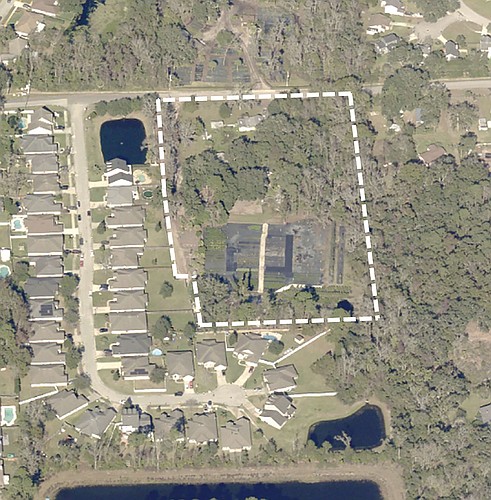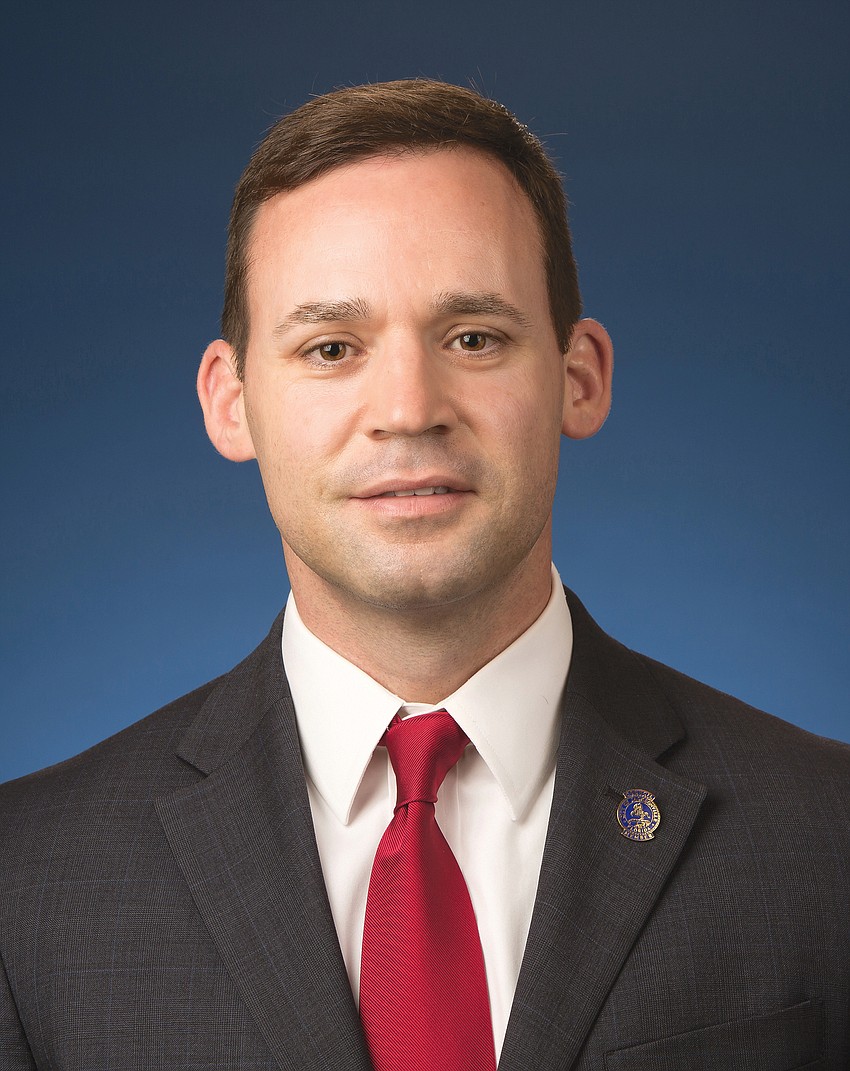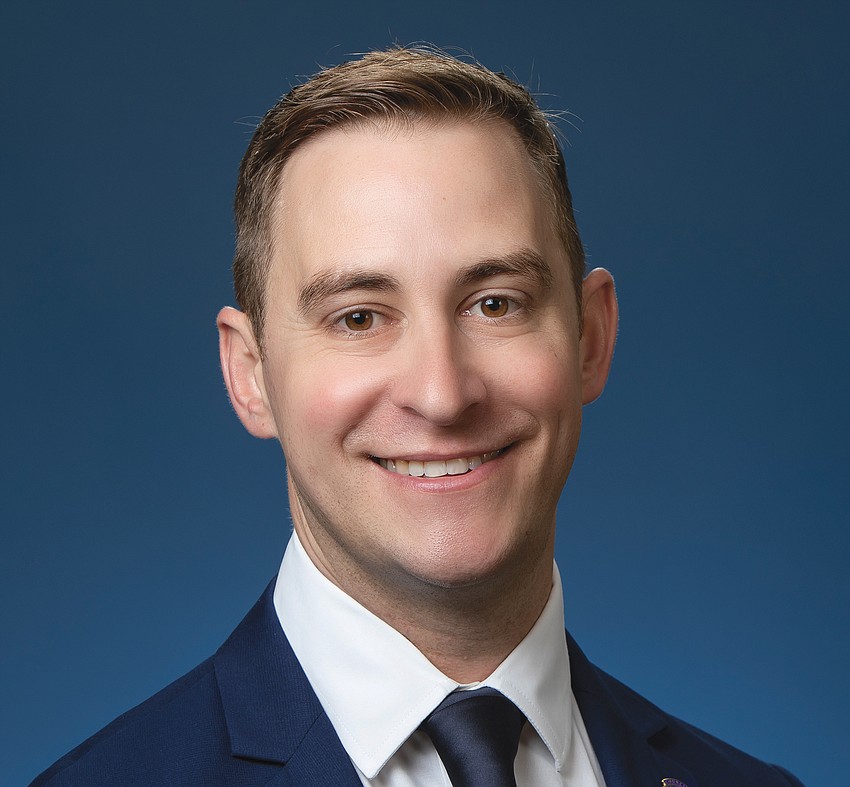
If Jacksonville City Council member Rory Diamond is correct, Duval County is in for a lot more discussions similar to one that took place April 2 before the Council Land Use and Zoning Committee over plans to build 65 town houses in a neighborhood in East Arlington.
The technical reason for the discussion involved a proposed land use map amendment and rezoning for the development, at 12636 and 12640 Ivylena Road.
The broader context was whether the committee would endorse what Diamond called a “classic missing middle” development that would provide new housing options between single-family homes and high-density projects like residential towers and multiple-building apartments.
The “missing middle” is a frequent topic at City Hall amid Jacksonville’s growth. As more residents come into the community, and as rising home prices and high mortgage interest rates push home ownership out of reach for newcomers and longtime residents alike, decision-makers are increasingly looking for ways to foster alternatives to single-family homes.
Neighborhood pushback
The solutions aren’t always easy or well-received, as the April 2 meeting showed.
In a discussion that lasted three hours and seven minutes, several residents complained that the town homes would create traffic and safety problems, noise and clutter in what is now a natural area filled with wildlife just beyond their backyards.
Some called the two-story town homes an invasion of their privacy, saying the top floors of the new structures would provide an up-close view of their backyards. The project site is currently zoned rural residential.

Diamond, who told neighbors that he was familiar with the area and visited it frequently, said he understood their concerns and commended them for being “articulate and passionate.”
“The argument on the other side of the coin … is that there’ll be 65 families who are not in the room because we don’t know who they are yet who will eventually live in these homes if this is approved. And we have to think about them also,” he said.
In the end, Diamond and all six of his colleagues on the committee voted in favor of the project with several new conditions attached.
Among them were that the town homes would have no second-floor balconies, that one unit would be removed and that an 8-foot fence be placed between the town homes and neighboring homes.
The vote advanced the item to the full Council, but Diamond said he expected to see more similar to it in the future.
“This is what’s coming to Jacksonville,” he said. “This is the future and it’s unavoidable because we have to have more housing in Jacksonville because it’s becoming unaffordable. So it’s a supply-and-demand argument.”
Seeking solutions
The LUZ meeting came a day after the Council Special Committee on Homelessness and Affordable Housing also discussed missing middle housing.
That committee, which was created by Council President Ron Salem in October 2023, asked city staff to provide information on the cost, scope and timeline of a study to identify areas of the city that would be suitable for higher-density zoning.

Council member Jimmy Peluso, a committee member, said the zoning changes were needed due to barriers to home ownership.
“We need more options, and it’s only going to harm the next generation of Jacksonville residents if we’re not doing our job as a body to make sure that we’re offering those options,” he said.
City staff reported that 91% of the land zoned residential in those areas is now restricted to single-family usage, limiting the amount of property that can be developed with missing middle housing.
The study would focus on two areas that together essentially comprise the portions of Duval County that were developed before the consolidation of city and county government in 1968.
Across those two areas, current zoning laws allow for an increase to 30 units an acre from 20 units on parcels through normal city processes.
For properties zoned low-density residential, a study is required for Council to raise the density to a target of 15 units per acre from the current 7 acres.

Council member Joe Carlucci, chair of the special committee, said the goal of the study would be to identify areas where increased density would be appropriate.
Criteria for that determination include whether properties are on or near collector or arterial roads, are in locations already characterized by a variety of land uses and are close to mass transit.
Any changes in density regulations would not apply to areas with their own zoning overlays, such as Downtown and San Marco.
At the committee’s direction, staff will determine the cost of the study and how long it would take to conduct it in-house versus working with an outside consultant.
The special committee’s last scheduled meeting is April 22, ahead of a May 1 deadline to report its findings and make recommendations.
Seeking options
Both the Council and Mayor Donna Deegan’s office are working to expand housing options, including for lower-income residents.
According to the Northeast Florida Association of Realtors, the median sales price of homes in the county was $349,000 in February, the last month for which statistics were available.
That was 68% higher than the price five years ago – $207,200 in February 2019.
Rent also is rising in the area. A recent study by rent.com showed that Jacksonville experienced the sixth-largest increase in rent in the past year among 50 cities across the U.S.
The study showed that rent increased 8.2% in Jacksonville in the past year to a median of $1,781 per month.
As developers look for properties where they can fill the missing middle or build affordable housing, or both, they’ve landed on parcels near single-family neighborhoods in several areas of Jacksonville.
The issue was the subject of another lengthy LUZ meeting in February, when the Council had a heated discussion about a proposed workforce housing apartment building along Biscayne Boulevard in Council member Reggie Gaffney Jr.’s district.
That project also drew out dozens of neighbors, who raised concerns about trash, crime, traffic and a negative effect on their property values.
The committee, and later the full Council, advanced the project on split votes over Gaffney’s objections.
In explaining their votes in favor of the project, some Council members referenced affordable-housing projects and town homes that were built in their districts and said more housing options were needed in all parts of the city.